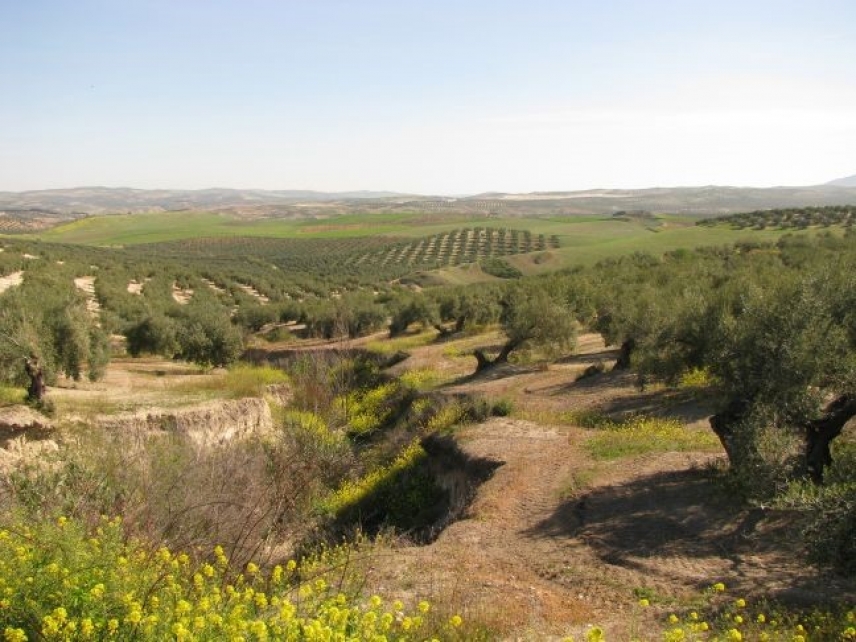 In years when rainfall is low, vegetation cover has a significant effect on gully formation, but as rainfall increases it becomes the primary element in controlling this phenomenon. In years with high rainfall and areas with vegetation cover of less than 25%, it would be very difficult to prevent gullies from forming.
In years when rainfall is low, vegetation cover has a significant effect on gully formation, but as rainfall increases it becomes the primary element in controlling this phenomenon. In years with high rainfall and areas with vegetation cover of less than 25%, it would be very difficult to prevent gullies from forming.
This is the conclusion reached by a research group at the University of Córdoba’s Department of Agronomy, coordinated by Professor Tom Vanwalleghem, after studying gully formation in the fertile croplands of Córdoba between 1956 and 2013, using aerial photographs.
Until now, topical threshold conditions, expressed by local slope and drainage area, have been widely used to predict gully incision locations; however, little attention hasbeen paid to the variation of these thresholds over time.
These research data were collected in a study of topographical thresholds for gullies forming under olive-groves and herbaceous crops between 1956 y 2013 in the western catchment area of the River Guadalquivir, analysing the impact of rainfall, land use and vegetation cover on the variation of these thresholds.
Although the results revealed no major variations in topographical thresholds between olive-groves and herbaceous crops,important variations were observed over time, linked to specific rainfall and plant-cover characteristics.
By predicting gully formation and identifying the precise areas in which new gullies may be expected to appear, we will be better able to combat the significant soil loss prompted by this phenomenon which not only causes marked difficulties for farmers but also threatens soil biodiversity and sustainability.
For that reason, Vanwalleghem stresses the need to develop a standardised system for assessing a soil’s predisposition to gully formation, using landscape memory as a tool. This will make it easier to adapt soil management techniques and conservation measures to the specific requirements of each area.
Sole, Rainfall and Vegetation Effects on Temporal Variation of Topographic Thresholds for Gully Initiation in Mediterranean Cropland and Olive Groves. Hayas, A; Poesen, J; Vanwalleghem, T. 9,787.


